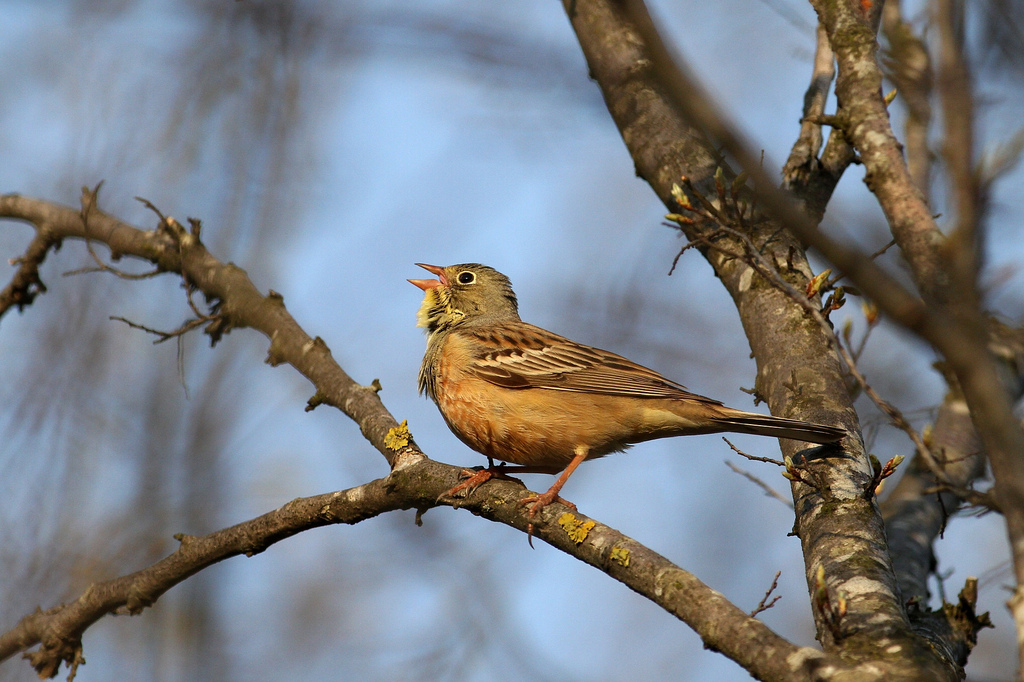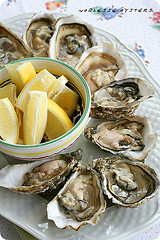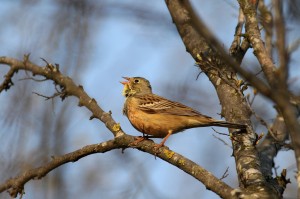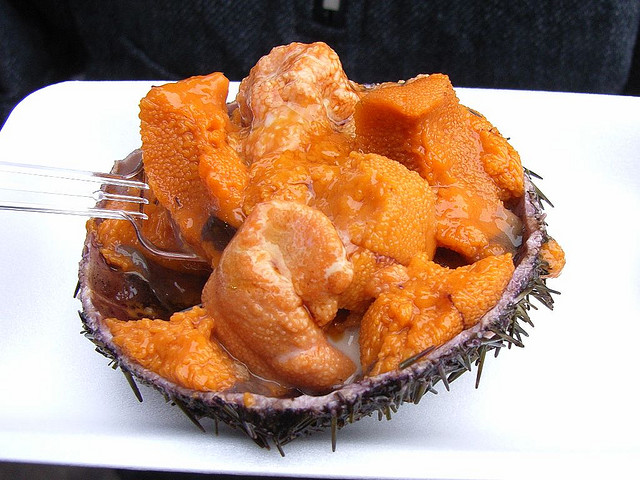In Pursuit of the Inedible

I’ve always had what you might call an adaptable palate – as a child, my family called me the “human dustbin”. So when I travel, I actively seek out not just the delicious and the interesting, but the grotesque, transgressive, the culturally unusual…
 On some levels, I’m starting from a more adaptable base than some: I’m British, of French (and other) heritage, so items such as very rare, indeed, raw meat, innards and offal have always been on my list of edibles.
On some levels, I’m starting from a more adaptable base than some: I’m British, of French (and other) heritage, so items such as very rare, indeed, raw meat, innards and offal have always been on my list of edibles.
And travel’s taught me a lot. The single most disgusting meal I’ve ever eaten – quite literally forcing it down past my gag reflex, as it happens – was in the deep Sahara, in Mauritania, and consisted of balls of sandy, rancid goat fat.
The fat, you see, is the best bit. So reserved for honoured guests.
Gee, t’anks…
I guess I’m driven, perhaps too driven, in some ways, to try new things. The thirst for novelty, the bizarre, the unusual, the out of the ordinary has been with me since I was a tiny child.
And, yes, I do actually seek out the transgressive.
Here are three transgressive foods I’ve tried, and three that remain on my foodie bucket list.
Brains
As I said, I’m a fan of offal – I love rare liver, and will eat foie gras raw – but brains were a big stumbling block for me. Which is odd.
I’ll eat the heart, the life force of a creature, without a second thought, suck the juicy fatty marrow that sustained a creature’s bones fresh out of the charred shell. I LOVE kidneys – although not, â la Leopold Bloom in Ulysses, so fresh that you can smell the urine on them.
But brains? It’s not the zombie thing, I think. But that if I were to place a creature’s soul anywhere, it would be within its brains.
I cracked this one on Lombok, Indonesia: quite literally, in fact. Served a pair of fresh-cooked pigeons, I braced myself to crush the skull and suck the brains.
It tastes – well, rather mild, and bland, in fact. A surprisingly gentle flavour for something so vital, so transgressive….
Sea Urchin
I adore oysters, though much prefer the raw to the cooked: even smoked, they lose their sensuous allure. It’s like taking a big, big mouthful of the deep sea, accompanied by the scents and flavours of, yes, sex.
There’s an orality to the consumption of them, and a ritual to the preparation – I prefer the French style, with wine vinegar and shallots, to the American style, with tabasco and lemon, but sometimes I like to switch around – that make them genuinely indulgent.
Mediterranean sea urchin is a little in the same vein as oysters, to be honest. The parts you eat are, in fact, the creature’s genitalia, carefully extracted from the enormous spiny shell, served raw, pink and, if you’re quick, still trembling.
Mediterranean sea urchins are oysters times about twenty, in fact, full of the salty, iodine tang of the sea, full of the rich fullness of promise, slimy and silky at the same time.
To be honest, I prefer the softer style, the Pacific sea urchins the Japanese call uni, which is smoother, gentler, slightly livery in flavour.
Grubs
I could devote an entire post to my experiences with insects, and at some point I probably will, but the hardest one for me was definitely grubs, in Lijiang, Yunnan, China.
Not only because the creatures were squirming and alive until they dropped them into the hot oil to fry. But because…
Well…
I’ve eaten crickets. They taste like anything crispy and deep-fried, to be honest. I’ve tried dragon flies, the Mezcal worm, chocolate-coated ants and a scorpion lolly.
But, grubs? They’ve got to taste slimy, right? They live on decay. Surely they must taste rotten?
Wrong, in fact. But not far wrong. These ones tasted of bitter cardboard. Quite unpleasant.
And hard to swallow, frankly: yes, I began to gag.
Dog
 I don’t have significantly more of an ethical problem with eating dog than I do with eating rabbit, or, for that matter beef: if we are to kill and eat sentient beings, we can kill and eat all of them, apart from humans, though ethically we should do so kindly.
I don’t have significantly more of an ethical problem with eating dog than I do with eating rabbit, or, for that matter beef: if we are to kill and eat sentient beings, we can kill and eat all of them, apart from humans, though ethically we should do so kindly.
Admittedly, there’s an argument against eating carnivores. It takes ten pounds of grain to produce one pound of beef, and more than that to produce one pound of dog, so the wastage of food resources is more intense.
But… I’m European. And in my home culture, dogs are friends, not food.
And, despite travelling in China, Vietnam and Indonesia, all places where dog is eaten, I have yet to make the move to do it. Largely because I have never found myself in a place where dog is on the menu – most often dog meat is served in specialist restaurants – and have never made the voyage to do so.
But it’s on the list. And I’ve been twenty minutes ride from a restaurant where I could try it. And not done it! Go figure.
Maggot Cheese
I love strong cheeses, of all persuasions, pretty much, though I find the mouthburn of a ripe Spanish Cabrales a little much to deal with.
The Sardinian cheese known as casu marzu is served so overly ripe, so rotten – although, with cheese, as with other fermented foods, the question of where fermentation ends and decay begins is largely a question of personal and cultural preference – that maggots ooze within it, and even jump out of it.
It’s almost impossible to find now. And it would require a mission to Sardinia to do so.
But, one day, I will do this. Because for a European culture to overcome our aversion to insects – which in parts of Australasia and Latin America are standard menu items – there must be something special.
Ortolan
 Now, this is on my wishlist, as it should be on any true decadent’s – the illegal songbird was, supposedly, accompanied by foie gras, oysters and capons, one of the last meals of the French politician Francois Mitterrand.
Now, this is on my wishlist, as it should be on any true decadent’s – the illegal songbird was, supposedly, accompanied by foie gras, oysters and capons, one of the last meals of the French politician Francois Mitterrand.
Like a lot of small birds – take the Egyptian fondness for little pigeons, stuffed full to bursting of rice and meat and vegetables – the ortolan is eaten whole, complete with uncleaned guts, and the brain consumed along with its crispy crunchy little skull.
I’m curious, I guess, to find the flavour that drove a species close to extinction. Is it really any different from any other small bird? And, what do the intestines of a tiny songbird taste like?
Are they like whitebait, the little fish, eaten whole, where the guts are so small they register only a faint tang of bitterness? Or do these gourmets indulge in the taste of unripe birdshit?
I don’t know. But I’d like to find out. And, one of these days, I will.
